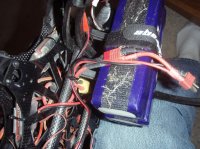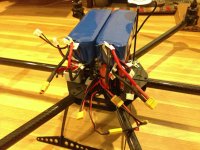SeanArenas
Member
Hello!
With the help of Tomstoy I have gotten the bird flying. Now I need to familiarize myself with all of the controls and stuff.
I recalibrated my compass, then got it to lift off in my front yard. Trying to get the feel for the controls, I adjusted the throttle up and down and watched it gain and lose height, then moved it around a few feet with the other flight stick.
Then it moved itself up about 50 feet and hovered over my neighborhood, freaking me out. I tried to bring it back down and couldn't figure out how. I think it was in GPS mode and I am not sure how I eventually got it to land, but I did. Now I want to take it to the park and practice flying, but want to make sure I know how to take off and land correctly, in the 3 different modes.
I've looked around for a walkthrough on this but haven't had luck yet. Any advice, please?
With the help of Tomstoy I have gotten the bird flying. Now I need to familiarize myself with all of the controls and stuff.
I recalibrated my compass, then got it to lift off in my front yard. Trying to get the feel for the controls, I adjusted the throttle up and down and watched it gain and lose height, then moved it around a few feet with the other flight stick.
Then it moved itself up about 50 feet and hovered over my neighborhood, freaking me out. I tried to bring it back down and couldn't figure out how. I think it was in GPS mode and I am not sure how I eventually got it to land, but I did. Now I want to take it to the park and practice flying, but want to make sure I know how to take off and land correctly, in the 3 different modes.
I've looked around for a walkthrough on this but haven't had luck yet. Any advice, please?



